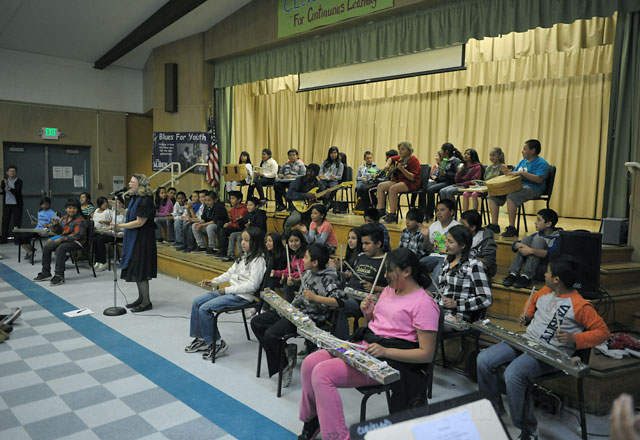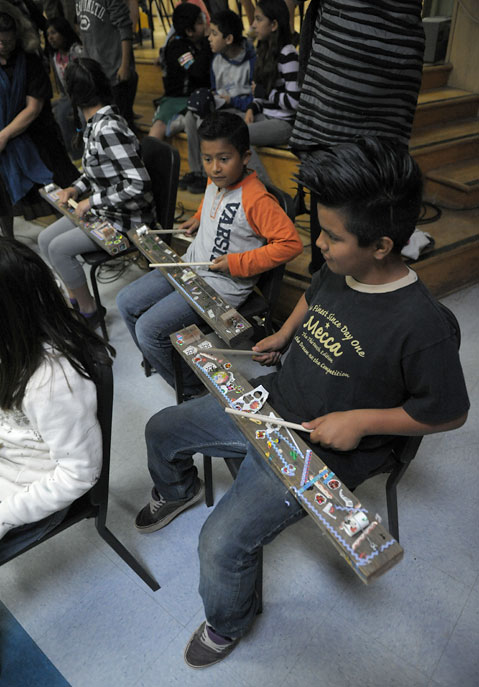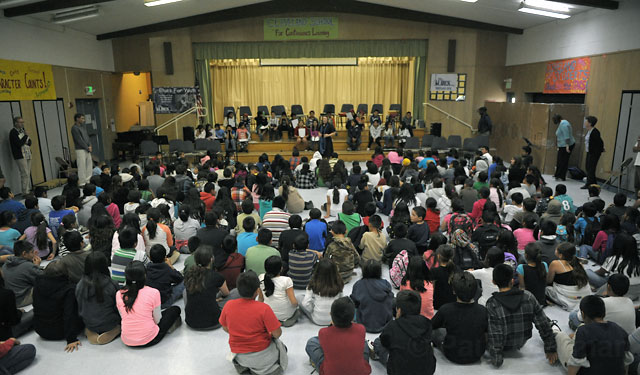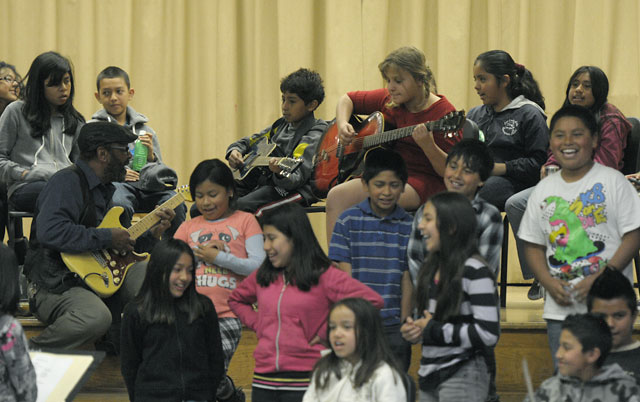School of … Blues
Blues for Youth Comes to Cleveland Elementary

The fifth graders at Cleveland Elementary have just finished performing at a school assembly, the culmination of the Santa Barbara Blues Society’s Blues for Youth program. While the boys spill across the auditorium floor to roughhouse, the girls form a circle around Valerie Johnson to ask if she is married to Al B. Blue, the partner with whom she has given the students a seven-week crash course in blues music. As word ripples around the crowd of girls that indeed the two are married, one sighs, pirouettes, and falls on her back.
That Johnson and Blue (who refuses to share the name his mother gave him) have so strongly endeared themselves to the kids in six 45-minute sessions is almost as impressive as the fact that they actually taught them how to sing and play blues music.

They downplay the accomplishment, however. “Kids are sponges,” says Al. “If you don’t tell kids something is hard, they just do it,” adds Johnson.
The Santa Barbara Blues Society — whose members love to point out that, founded 1977, it is the oldest in the country — first won grants to do educational outreach in 2005 which have since been bolstered by matching funds from the Santa Barbara Bowl.
Johnson and Blue, along with Cleveland’s teachers, tied the blues lessons into the fifth-grade U.S. history curriculum on slavery. “I date the blues to when the slaves were stolen from their villages and sold on the auction block,” Johnson says. She explains that the call-and-response format central to African-American music and religion began with a “field holler” when new slaves, who did not share a common language, would call out to each other with guttural sounds to express their pain and sorrow.

The Cleveland students read aloud a short play about the history of Harriet Tubman before they performed a song about Tubman to the tune of Lady Gaga’s “Born This Way.” (Yes, Tubman was “born a slave.”) Building on the theme of the Underground Railroad, they also sang a medley of spirituals made up of “Run Mary Run,” “Way Over in Beulah Land,” and “Wade in the Water.” Johnson explained to her audience—the rest of the school’s students—that Beulah Land represents freedom and that when slaves directed runaways to enter a body of water, it was so that they could hide their scent from hunting dogs.
The slavery lesson over, Cleveland students also sang an original tune called “The Walls Shake,” before Johnson lilted a call-and-response song called “Little Red Rooster” where students cock-a-doodle-dooed, wolfed, and howled. She finished with “Let the Good Times Roll.”

Al B. Blue played lead guitar on his cream-colored Fender Stratocaster throughout, but he was accompanied by students on lap steels, guitars, washboards, a drum made out of an old cheese roll, and homemade diddley bows fashioned out of two-by-fours and decorated with stickers.
Blue and Johnson, Nipomo residents, both sport impressive resumes as performance musicians, but they’ve been working with kids all over the country for 15 years. Johnson says that, even though blues might not be the most popular genre on the radio, kids can dig on it because “Blues is about how life is, not how you want it to be.” In fact it’s so much about real life, says Blues for Youth Coordinator Rosemarie Keller, that it’s sometimes hard to find songs with appropriate lyrics for young children.


